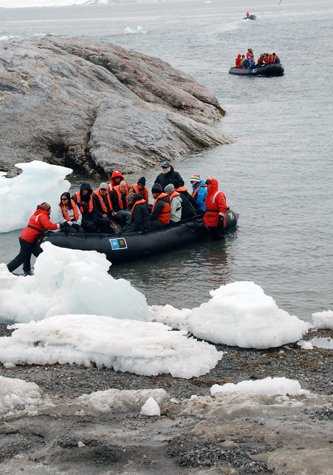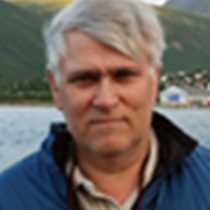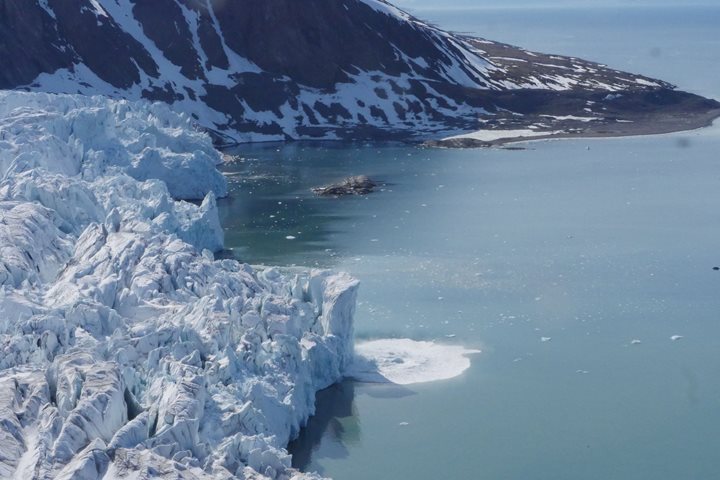After our departure from Longyearbyn early last evening and after many hours traveling from many different destinations all over the world, we finally all woke up in an astonishing pristine icescape off Hornsund. This is the most southern major fjord system along the western side of the largest island Spitsbergen, in the Svalbard archipelago, which is impacted by the last remains of the Gulf Stream (here called North Atlantic Drift). Blue sky, sparkling sunshine, drifting pack-ice, snow covered mountains, glaciers falling into the sea... Yes, we are for sure in the high Arctic and our expedition has started. With 24 hours daylight ahead for the upcoming week it means very little rest or sleep and one can use any hour for watching animals and photography. This really makes the polar regions unique through the summer, but on the other hand the price to pay is the long dark polar night through the winter.
As morning progressed we sailed deeper into the fjord, the introduction of the staff team and the Arctic AECO introduction was given followed by our mandatory decontamination. This was followed by a presentation, an introduction to photography and how to deal with our equipment and the unique light you encounter far north or south. Now we are ready to meet OUR adventure of the far north.
Before and during lunch all side arms of the fjord system were investigated for any “white fury mammals.” There is still a lot of fast-ice remaining and plenty of ringed seals hauling out—in distance they look like black sausages. Finally far into the main fjord we were rewarded by a very distant female polar bear with her coy (Cub Of the Year) found by our sharp-eyed staff Bud Lehnhausen. The ice did not admit any closer approach and we left her alone, still our first bear for this expedition.
Instead we made it out of the fjord and anchored the ship by a steep and very high cliff filled with breeding seabirds—Gnålodden where we would spend our first outing and explore the land. Soon everybody was ashore and divided into long, medium, and short hikes. An older Norwegian trapper’s cabin was visited, dating back to 1920s and last used by Odd Ivar Ruud the winter of 1970-71. Old remains of a former pomor hunting station (Russian), before 1850, and whalebones touch the human history of this location. Botany with beautiful purple saxifrage, and geology in the form of gneiss embedded with quartz was seen, and large logs which had drifted from the Siberian rivers through the Arctic Ocean to finally end up at the beaches of Spitsbergen, brought by the west-going Siberian current. One log showed nicely how a dark object stores the energy and melts the snow beside. A lesson in basic physics! In the ‘old days,’ with steam engines and coal, a trick if the ship had been stuck in the ice was to spray the sea ice with coal and have it to thaw.
Back aboard it was time for the Captain’s Welcome Cocktail as we headed out of the fjord for more adventures. But first after a nice dinner and a few hours sleep.







